The Tortoise and the Hare behind the scenes
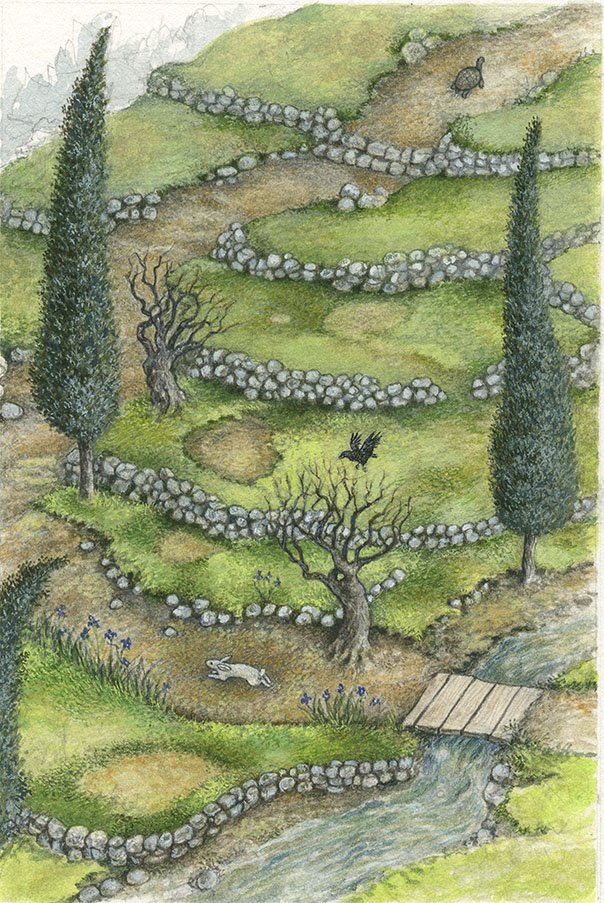
The Tortoise and the Hare
Once a tortoise and a hare began to argue over their speed and agility in getting from one place to the next. Remaining unconvinced by each other's claims, they both agreed on a specific place and time to meet up again in order to end the dispute once and for all.
On the day of the race, the hare was laughing to himself at the tortoise’s ridiculous claims of haste and was in no rush to get started. He stretched out under a tree for an afternoon nap.
The tortoise, fully aware of his disadvantages, set off at an easily sustainable pace. Soon he passed the sleeping hare and lumbered along until he arrived at their agreed upon destination. The hare woke up from his nap in a panic and could see how far he had let himself get behind his persistent rival. Even at full speed he was unable to catch up.
The tortoise, on the other hand, was smug the rest of his days for his accomplishment - he had indeed outrun a hare.
Slow and steady wins the race. But even better, hard work often prevails when natural talent goes unused.
I wanted to include this fable in my series of 15 Aesop illustrations because the message is a relevant theme in my work. I get impatient easily. It’s a long process going from initial thumbnail sketches to a finished illustration. By being slow and steady, it forces me to take my time and not settle on my first ideas too soon.
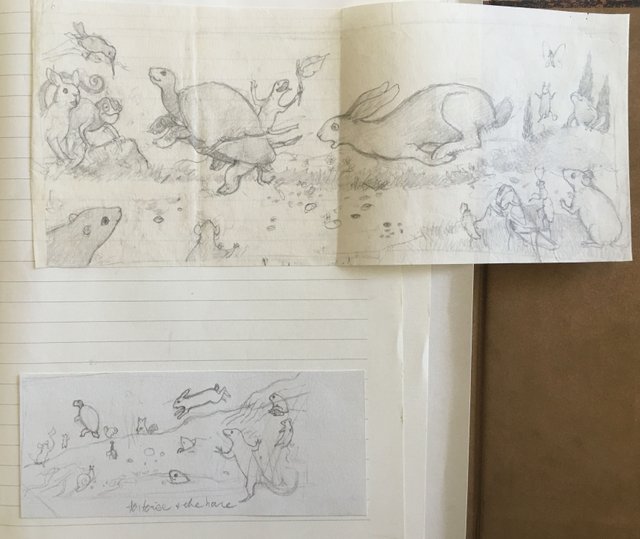
This sketch is from a more child-friendly version I did years ago for a greeting card. For my recent series of Aesop paintings, I wanted to stay away from anthropomorphic creatures.
Here's how I start-
When I have illustration projects, I start the initial design process in my head whenever I read the text. I often reread the story a few times to make sure I'm not missing out on any important elements. And I'll make another mental note about ways I can embellish the story. The best part about being an illustrator is adding something not in the text - kind of like creating a new story within the story.
At this point I start little thumbnail studies going through several variations - try this viewpoint, shift that perspective, what is unexpected, and what has been done before? How would this work, or would it look better flipped? I make sure I double check my collection of Aesop books to make sure I am not unconsciously copying another artist's interpretation. Sometimes that happens -
I did a quick landscape sketch to put me into a Greek countryside - that's how I develop a sense of place. I sort of have to be there in the setting. (You know, for me to be really authentic, I'm afraid I must go to Greece - < me talking to someone.)
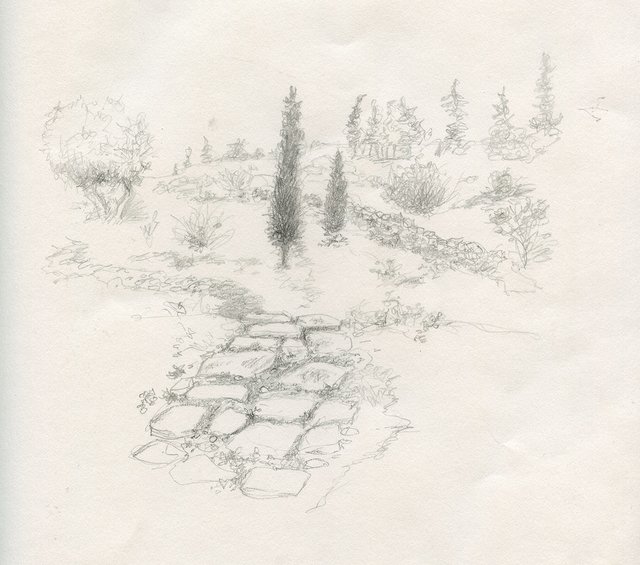
Then I study the characters. A hare is not a rabbit. The hare in this story has a personality. He’s fast, and desperate near the end. The tortoise – he’s pretty sure of himself. But he’s also cumbersome and slow moving.
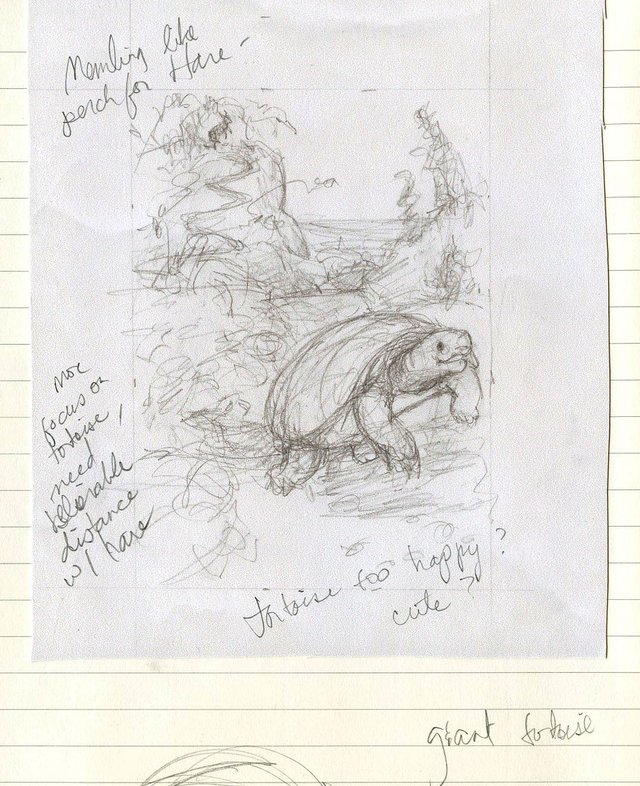
I was heavily influenced by the Flemish painters of the 15th Century - Hans Memling, particularly, but also crazy about Albrecht Dürer's rolling hills, gnarled trees, and rocky precipices.
This first composition was not working out. I didn't like seeing the tortoise so close up - done too many times. In my journal, I jotted down ideas as they came. This time I was curious about using a bird's-eye view; what would be more appropriate for Aesop's tales than a terraced Greek countryside? I kept the trees from the initial landscape study and got ideas from an aerial photography book on Greece.
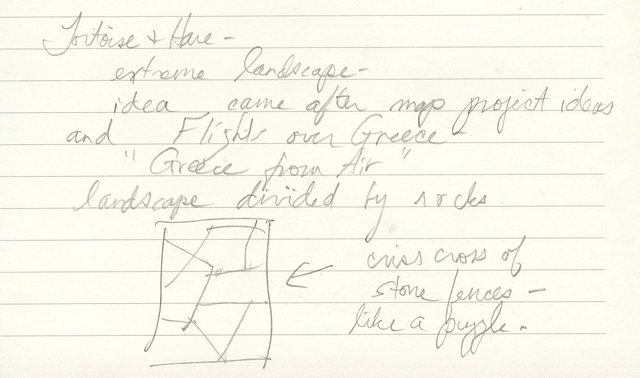
This would be a better way to show both the tortoise and hare with the distance between them. I added a crow landing on an old olive tree - symbolic of futility for the hare. It also brings in a morose tone of defeat by taking on a vulture's role.
The initial rough sketches have to be cleaned up. They get turned into scaled-up drawings with my projector, further refined, projected again onto final illustration board, redrawn with every detail in place, which finally leads me to the painstaking process of building up watercolor layers until finished. (I recently started adding some half tones and deeper values in pencil before the first layer of color. It's intimidating to face a pure white board with only lines to guide you.)Sometimes I use a blowdryer to dry each layer before I start the next. The board must be completely dry between washes of color so as not to mess up the paper texture; it's much better when I have a few paintings going at a time so I can alternate between them.
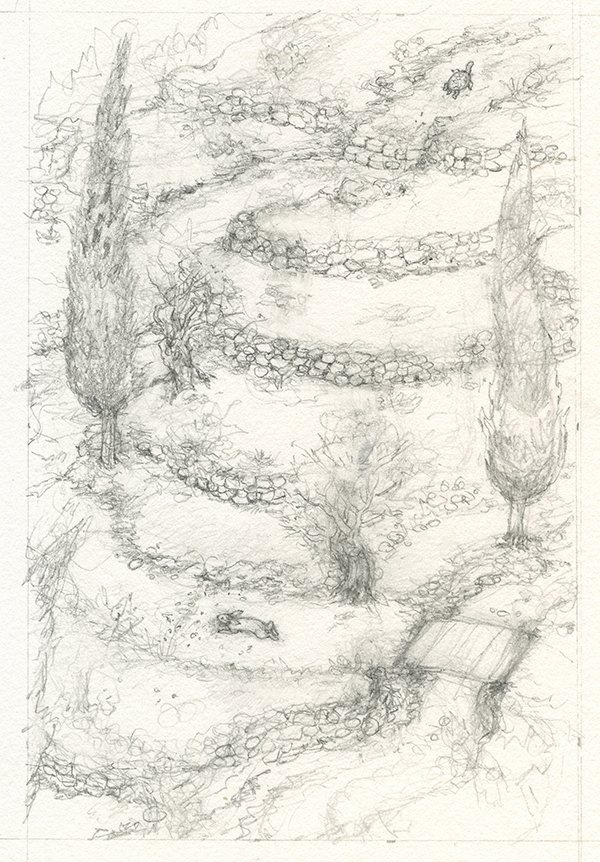
Don't rush through any of these parts - remember, be the tortoise on his course. And since my work is done by hand, I have to be super careful with my paints to avoid uncorrectable mistakes. I can't tell you how many times I have dipped my brush into a cup of tea instead of water. Sometimes the brush will flip out of my hand loaded with color and drop on an area I wanted to be white. So then I have to find a way to camouflage the spot it left. Much swearing. Unfortunately my flat file drawers are full of rejects from these kinds of accidents.
As much as I appreciate and use tools like Photoshop and Illustrator, nothing is more satisfying than the tactile experience of brush to paper. I need that connection to my work to make it more personal.

And the final illustration above. I left the upper left a little undone; I liked the contrast of the wash-y mountains and trees in the distance against the more finished pathways and boulders. That was pretty hard - usually I am overly obsessive and would never dream of leaving it in this state. It's true I had run out of time with my thesis project, but I'm glad I let it go. The painting looks more alive this way.
So that's it for this fable - this is way more fun than simply posting the illustrated fable itself with no backstory.
It's beautiful! I don't know anything about how to paint, so I found your backstory interesting. How long have you been painting?
Thanks, @edgeland. I started painting 26 years ago professionally. I was terrified. Sometimes I still am. :)
You seem to be doing well!
What a great image! I'm glad you shared how you go about in creating your art.
Thank you - it's the first time I have done so.
Good gossip: you are Am glad you shared how you go about in creating your art.
I love that you're doing well here. I love how you show your process. Great job.
Thanks, Martin. That means a lot to me - really and truly
nice drawings you got talent :)
I said on your last post, your illustrations are among the best I've seen in children's books! Nice work!!
Thank you!
Very creative, will this end up as a book?
Thanks - not sure. I have a total of 15, but if I went the traditional children's book format, I would need 16 for a 32 page standard book. They might - or prints even.
I love this. Part of what I love about art is understanding where the artists mind is throughout the process. Food for thought @katecloud
Thanks - I really had no idea it was so interesting to others. I guess that's when you realize you don't get out enough. :)
excellent after cameras!
very nice. i enjoy how you show your process
It's really inspirational reading about your process, thank you for sharing. The end result is gorgeous, looks soft and inviting. It reminded me about my childhood, I loved that story!
Thank you, @pixielolz. I loved the story too. Good lessons there
Hey I noticed you are using the max amount of tags for this article... but did you know that you can easily spoof the system to allow for an additional tag?
https://steemit.com/steemit/@bayareacoins/so-you-think-you-are-limited-to-5-tags-for-your-post-now-wrong-click-here-to-learn-how-to-get-your-article-listed-with-6-tags